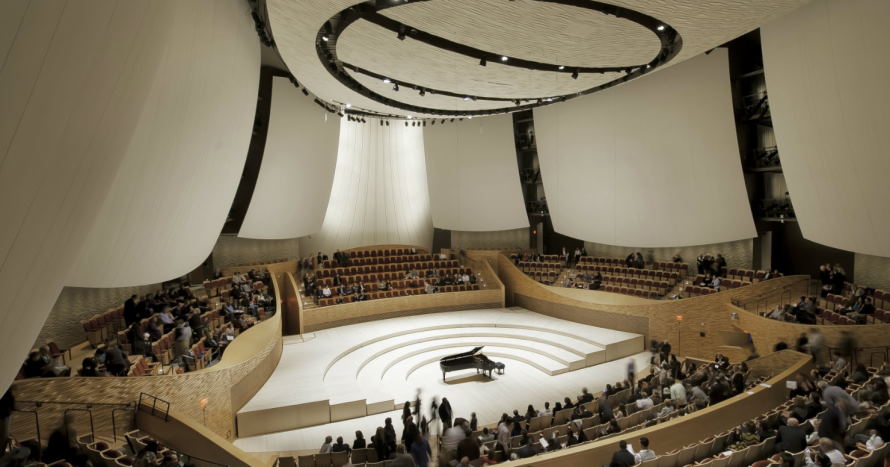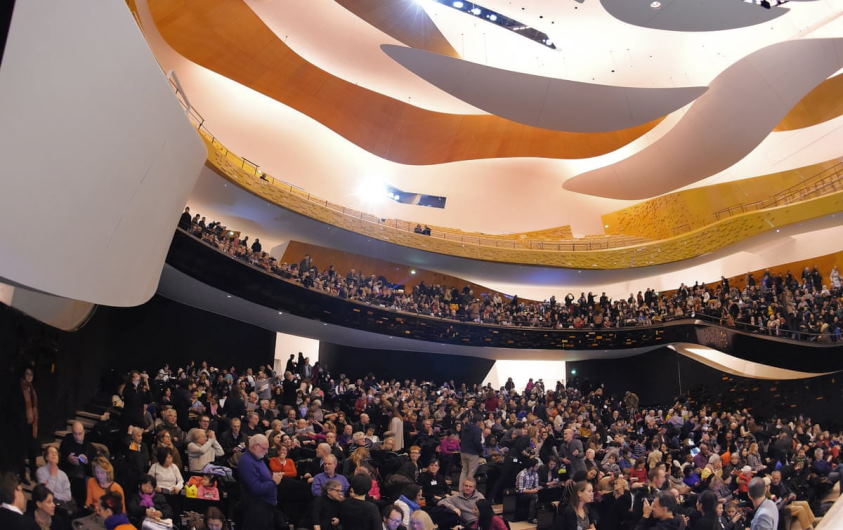Nothing compares to the thrill of attending a terrific concert in a great hall. But, of course, the combination of perfect sightlines, excellent sound, and an exhilarating atmosphere means enjoying the music is only part of the whole experience! But have you ever wondered what makes a concert hall stand out? How can small adjustments make sound better or worse? In this article, we’ll explore all you need to know about creating the perfect acoustic environment for concerts: What key elements define it? How do materials shape room characteristics? And ultimately, what makes certain venues stand out above others when it comes to sound quality? After reading through this guide on concert hall acoustics – designed especially for music lovers – you will recognize why some settings are ideal listening locations and how to find them – starting from your living room! So let’s get started.
Creating the perfect sound: a guide to concert hall acoustics
Concert halls have an important job in the music world—they need to create an environment for perfect sound. It takes dedicated attention to detail to ensure that each note and harmony is delivered with clarity and precision. Here’s a quick guide on concert hall acoustics and how they contribute to the experience of enjoying live music.
Acoustic Design: The first step in creating great concert hall acoustics is designing the room itself. Different shapes, wall materials, ceiling heights, seating arrangements, and other factors play a role in creating the right acoustic environment. A good designer can craft a space that gives performers the desired response but still allows audience members to hear everything.

Sound Reflection: Sound reflection is the main tool for creating a good acoustic environment. The surface of the walls and ceiling need to be designed to allow sound waves to bounce off them, creating an ever-expanding effect. This helps give the music more depth and character, making it easier for people to hear all the different elements of a song or performance.
Reverberation Time: Reverberation time is how long sound dissipates after it has been played. Too little reverberation can make instruments and voices sound flat, while too much can muddy up the mix and make everything sound bloated. A good concert hall acoustics designer should be able to find the right balance between these two extremes.
Sound Absorption: To ensure that the sound doesn’t get out of control, it’s important to consider how much sound is absorbed by the room. This can be accomplished through acoustic panels, carpets, and other materials designed for this purpose. The goal here is to ensure that loud sounds don’t overwhelm softer ones, allowing a more even mix throughout the space.
Creating great concert hall acoustics takes time and effort. However, with the right design team in place and an understanding of what makes good acoustics, it’s possible to create a well-balanced environment where performers have ample support and audience members can enjoy every note they hear. By following these guidelines, you should craft a room that allows everyone in the audience to enjoy the experience of listening to live music.

What are the important qualities of acoustics in a concert hall?
The quality of acoustics in a concert hall is essential for creating an enjoyable and engaging experience for the audience. Good concert hall acoustics should provide clear sound that is balanced, reverberant, and resonant. In addition, the ideal acoustic environment should also allow each instrument or voice to be heard clearly without any element overpowering the others.
Reverberation time should be carefully controlled so as not to muddy the music while allowing enough resonance to give it “life” and depth. Ideally, the audience should feel enveloped by the music without feeling overwhelmed by it.
Concert halls must also be designed with acoustic absorption materials such as carpets and wall panels to prevent sound from bouncing off walls in an uncontrolled manner. The ideal acoustic environment should perfectly balance clarity and reverberation, allowing the music to sound vibrant and alive while still maintaining focus and definition.
Additionally, good concert hall acoustics allow for the audience to easily hear each musician in an ensemble setting, even when they are playing at different dynamics or spots on the stage. This is important because it allows all musicians to be heard equally by the audience, creating an overall pleasing sonic experience.
Finally, all of these elements should come together to create an immersive atmosphere that transports both performers and audiences into another world filled with beautiful sound.
